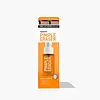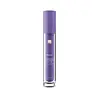What's inside
What's inside
 Key Ingredients
Key Ingredients

 Benefits
Benefits

 Concerns
Concerns

 Ingredients Side-by-side
Ingredients Side-by-side

Water
Skin ConditioningSalicylic Acid
MaskingSodium Lactate
BufferingNiacinamide
SmoothingPropanediol
SolventPropylene Glycol
HumectantSodium Hydroxide
BufferingPEG-40 Hydrogenated Castor Oil
EmulsifyingGlycolic Acid
BufferingCreatine
Skin ConditioningPhenoxyethanol
PreservativeCaprylyl Glycol
EmollientButylene Glycol
HumectantAloe Barbadensis Leaf Extract
Emollient3-O-Ethyl Ascorbic Acid
Skin ConditioningAllantoin
Skin ConditioningArctostaphylos Uva-Ursi Leaf Extract
Skin ConditioningHamamelis Virginiana Extract
AntiseborrhoeicGarcinia Mangostana Peel Extract
Skin ConditioningSimmondsia Chinensis Seed Oil
EmollientTocopheryl Acetate
AntioxidantWater, Salicylic Acid, Sodium Lactate, Niacinamide, Propanediol, Propylene Glycol, Sodium Hydroxide, PEG-40 Hydrogenated Castor Oil, Glycolic Acid, Creatine, Phenoxyethanol, Caprylyl Glycol, Butylene Glycol, Aloe Barbadensis Leaf Extract, 3-O-Ethyl Ascorbic Acid, Allantoin, Arctostaphylos Uva-Ursi Leaf Extract, Hamamelis Virginiana Extract, Garcinia Mangostana Peel Extract, Simmondsia Chinensis Seed Oil, Tocopheryl Acetate
Water
Skin ConditioningButylene Glycol
HumectantGlycerin
HumectantPolysorbate 20
EmulsifyingCamellia Sinensis Leaf Extract
AntimicrobialEuterpe Oleracea Palm Heart Extract
EmollientCoffea Arabica Husk Extract
AntioxidantAnthemis Nobilis Flower Extract
MaskingTocopheryl Acetate
AntioxidantGlycolic Acid
BufferingHydroxyethylcellulose
Emulsion StabilisingLavandula Angustifolia Oil
MaskingMelaleuca Alternifolia Leaf Oil
AntioxidantPhenoxyethanol
PreservativeCaprylyl Glycol
EmollientSorbic Acid
PreservativeWater, Butylene Glycol, Glycerin, Polysorbate 20, Camellia Sinensis Leaf Extract, Euterpe Oleracea Palm Heart Extract, Coffea Arabica Husk Extract, Anthemis Nobilis Flower Extract, Tocopheryl Acetate, Glycolic Acid, Hydroxyethylcellulose, Lavandula Angustifolia Oil, Melaleuca Alternifolia Leaf Oil, Phenoxyethanol, Caprylyl Glycol, Sorbic Acid
 Reviews
Reviews

Ingredients Explained
These ingredients are found in both products.
Ingredients higher up in an ingredient list are typically present in a larger amount.
Butylene Glycol (or BG) is used within cosmetic products for a few different reasons:
Overall, Butylene Glycol is a safe and well-rounded ingredient that works well with other ingredients.
Though this ingredient works well with most skin types, some people with sensitive skin may experience a reaction such as allergic rashes, closed comedones, or itchiness.
Learn more about Butylene GlycolCaprylyl Glycol is a humectant and emollient, meaning it attracts and preserves moisture.
It is a common ingredient in many products, especially those designed to hydrate skin. The primary benefits are retaining moisture, skin softening, and promoting a healthy skin barrier.
Though Caprylyl Glycol is an alcohol derived from fatty acids, it is not the kind that can dry out skin.
This ingredient is also used as a preservative to extend the life of products. It has slight antimicrobial properties.
Learn more about Caprylyl GlycolGlycolic Acid is arguably the most famous alpha hydroxy acid (AHA) with tons of research backing its benefits.
It is found naturally in sugar cane but the form used in skincare is usually synthetic for purity and stability.
Glycolic acid removes the top layer of dead skin cells to allow newer and fresher ones to emerge.
AHAs work by breaking down the structural “glue” that holds old skin cells in place. When that buildup is gone, your skin can renew itself more efficiently.
Research also shows glycolic acid stimulates collagen production, helping to firm and thicken the skin over time. This is one of its biggest advantages over other AHAs.
Overall, glycolic acid helps with:
Fun fact: Glycolic acid boosts skin hydration by helping it produce molecules that increase hyaluronic acid naturally.
To work best, glycolic acid products should have a pH between 3-4 (that’s where exfoliation is most effective but still gentle on skin).
The pH and concentration of a product are key to its effectiveness:
It is normal to feel a slight stinging sensation when using glycolic acid. This usually fades as your skin adjusts.
Because glycolic acid has the smallest molecular size in the AHA family, it can penetrate deeper, which enhances its effectiveness but also makes it more likely to irritate sensitive skin.
If your skin is very sensitive or prone to rosacea, glycolic acid may be too strong; in that case, try milder options like lactic acid or a PHA instead.
Recent studies suggest glycolic acid might even help protect against UV damage. But don’t skip sunscreen! Freshly exfoliated skin is more sensitive to the sun.
Glycolic acid is a skincare superstar. It smooths, brightens, hydrates, and firms the skin. Unless you’re highly sensitive, it’s well worth adding to your routine.
Read more about some other popular AHA's here:
Learn more about Glycolic AcidPhenoxyethanol is a preservative that has germicide, antimicrobial, and aromatic properties. Studies show that phenoxyethanol can prevent microbial growth. By itself, it has a scent that is similar to that of a rose.
It's often used in formulations along with Caprylyl Glycol to preserve the shelf life of products.
Tocopheryl Acetate is AKA Vitamin E. It is an antioxidant and protects your skin from free radicals. Free radicals damage the skin by breaking down collagen.
One study found using Tocopheryl Acetate with Vitamin C decreased the number of sunburned cells.
Tocopheryl Acetate is commonly found in both skincare and dietary supplements.
Learn more about Tocopheryl AcetateWater. It's the most common cosmetic ingredient of all. You'll usually see it at the top of ingredient lists, meaning that it makes up the largest part of the product.
So why is it so popular? Water most often acts as a solvent - this means that it helps dissolve other ingredients into the formulation.
You'll also recognize water as that liquid we all need to stay alive. If you see this, drink a glass of water. Stay hydrated!
Learn more about Water